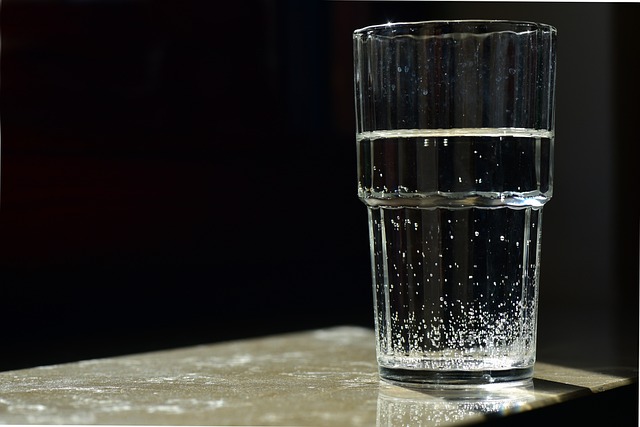3 Key Takeaways:
1. Rapid PFAS Detection: A new method detects PFAS in minutes, significantly speeding up environmental monitoring efforts.
2. Superior Sensitivity: Utilizes paper spray mass spectrometry, offering detection levels up to 100 times more sensitive than current standards.
3. Widespread Environmental Impact: Aids in quickly identifying PFAS contamination in water, soil, and consumer products, supporting efforts to set safety standards and protect public health.

Scientists Reveal Technique to Identify 'Forever Chemicals' in Just Minutes
In a world where the term "forever chemicals" isn't just a catchy phrase but a stark reality, the challenge of combating substances that refuse to leave our planet quietly has become more daunting. These chemicals, known scientifically as PFAS (Per- and Polyfluoroalkyl Substances), are not only incredibly persistent, taking thousands of years to degrade, but they're also omnipresent, lurking in everything from the packaging that holds our food to the clothes we wear to ward off rain. Alarmingly, they've infiltrated nearly half of the U.S. tap water supply, posing unseen threats to our health and environment.
However, a groundbreaking study from the New Jersey Institute of Technology (NJIT) is lighting the path toward a solution. Published in the prestigious Journal of Hazardous Materials, a team of NJIT chemists has unveiled a revolutionary method that can detect traces of PFAS in food packaging, water, and soil samples in a mere three minutes or less. This new technique could dramatically accelerate our efforts to understand and mitigate the spread of these toxic substances, backed by over $2 billion in EPA grant funding from President Biden's Bipartisan Infrastructure Law aimed at enhancing water quality testing and treatment.
The trouble with PFAS, as NJIT chemistry professor and study's corresponding author Hao Chen points out, is their sheer variety and the complexity of tracking their distribution in the environment. Traditional testing methods are not only costly but also time-consuming, often requiring hours just for sample preparation and analysis. Enter the NJIT team's solution: a rapid, sensitive, and versatile method that promises to change the game in monitoring our drinking water, lands, and consumer products for contamination within minutes.
This innovative approach hinges on a technique called paper spray mass spectrometry (PS-MS), which is significantly more sensitive (10-100 times, to be precise) than the current gold standard, liquid chromatography/mass spectrometry. PS-MS allows for the ionization and rapid detection of PFAS by a high-resolution mass spectrometer, offering a clear snapshot of each PFAS molecule present and the extent of contamination down to parts-per-trillion levels. For more challenging samples like soil, the team developed a variation known as desalting paper spray mass spectrometry (DPS-MS), which effectively removes salts that can hinder the detection process, further enhancing their ability to spot these elusive compounds.
To put their method's sensitivity into perspective, the team's detection limit for PFAS stands at about 1ppt—equivalent to spotting a single drop of water in 20 Olympic-sized swimming pools. Their tests have already yielded significant findings, such as detecting 11 different PFAS molecules in various fast-food packaging and traces of PFOA in local tap water while confirming the absence of PFAS in filtered fountain water at the university.
This breakthrough could not be timelier, as the EPA moves to establish maximum contamination levels for six PFAS in drinking water nationwide. With NJIT's method, more comprehensive screenings for toxic PFAS become feasible, potentially safeguarding our water supply from these dangerous pollutants.
However, the implications of this study extend beyond just detecting PFAS. The NJIT team has also paired their method with a novel degradation catalyst capable of eliminating 98.7% of PFAS in drinking water samples within three hours, showcasing the potential for not just identifying but also effectively removing these chemicals from our environment.
The immediate benefits of this research will be felt particularly in the Northeast, where around 10% of New Jersey's population faces high levels of perfluorooctanoic acid in their drinking water, starkly above the national average. Yet, the broader impact promises to revolutionize how we monitor consumer products, from cosmetics to foods, and even the air we breathe, opening new frontiers in our fight against the persistent threat of forever chemicals.
Watertech China 2024 to Feature Advances in PFAS Remediation
Building on the momentum of groundbreaking research in PFAS detection, Watertech China 2024 emerges as a pivotal arena for the latest advancements in water technologies. Scheduled for June 3-5, 2024, at the National Exhibition and Convention Center in Shanghai, this expo is set to showcase an array of innovations aimed at tackling the challenge of removing PFAS from drinking water. As environmental scientists and industry leaders converge, the expo will spotlight cutting-edge solutions and remediation technologies that promise to enhance the safety and purity of drinking water on a global scale. Watertech China 2024 represents a critical juncture for stakeholders to exchange knowledge, drive forward technological progress, and address one of the most pressing environmental issues of our time.


